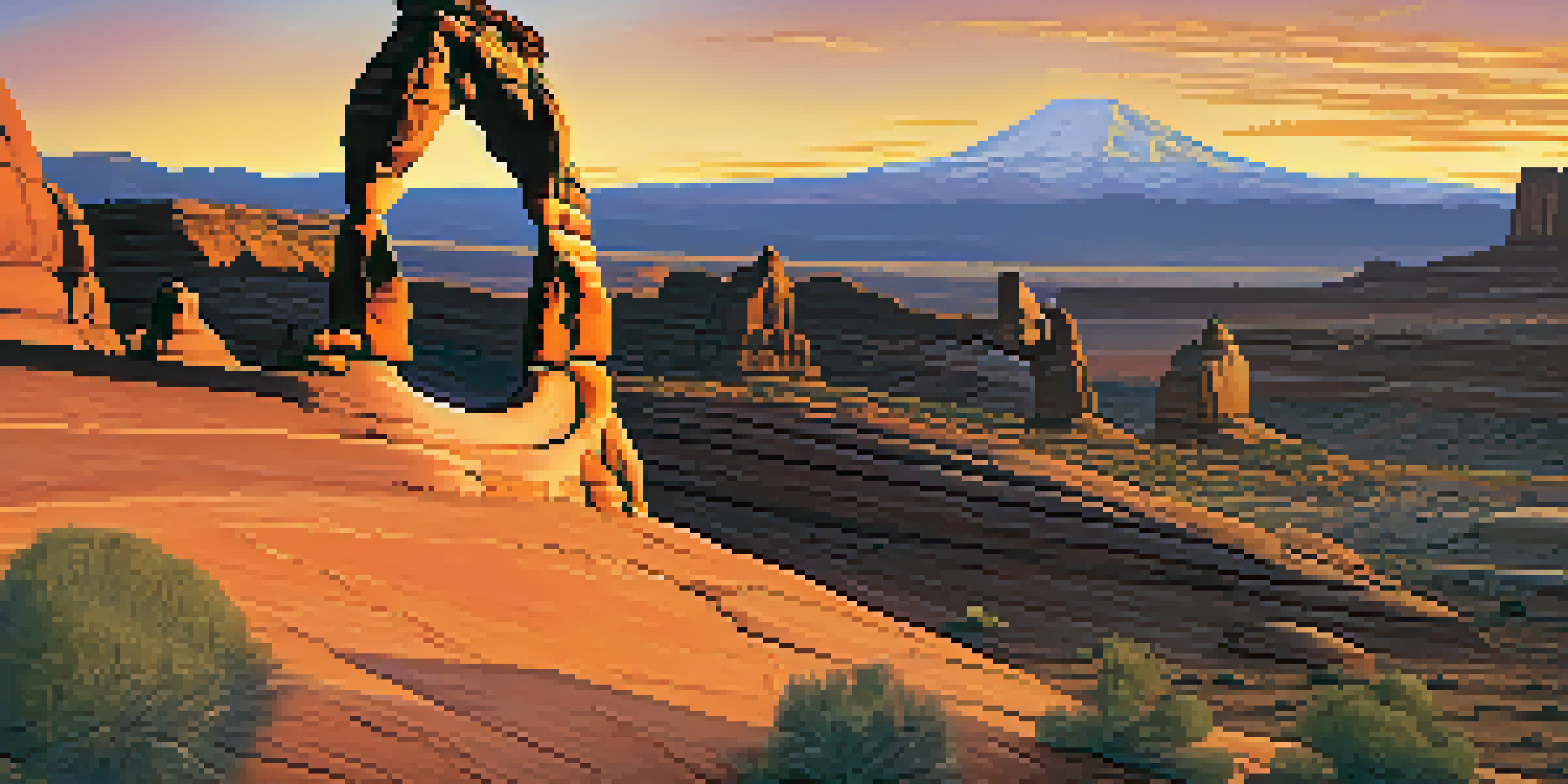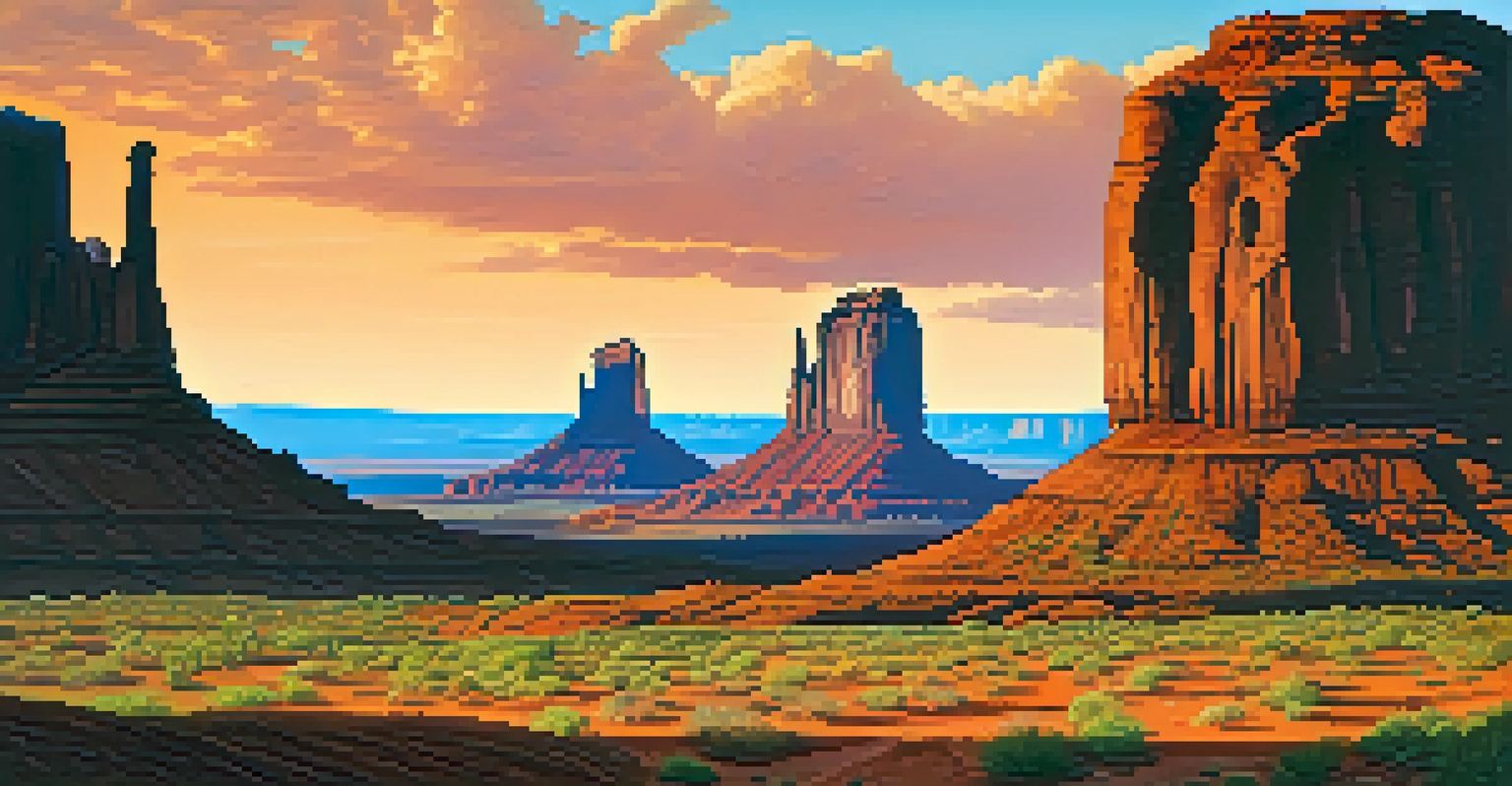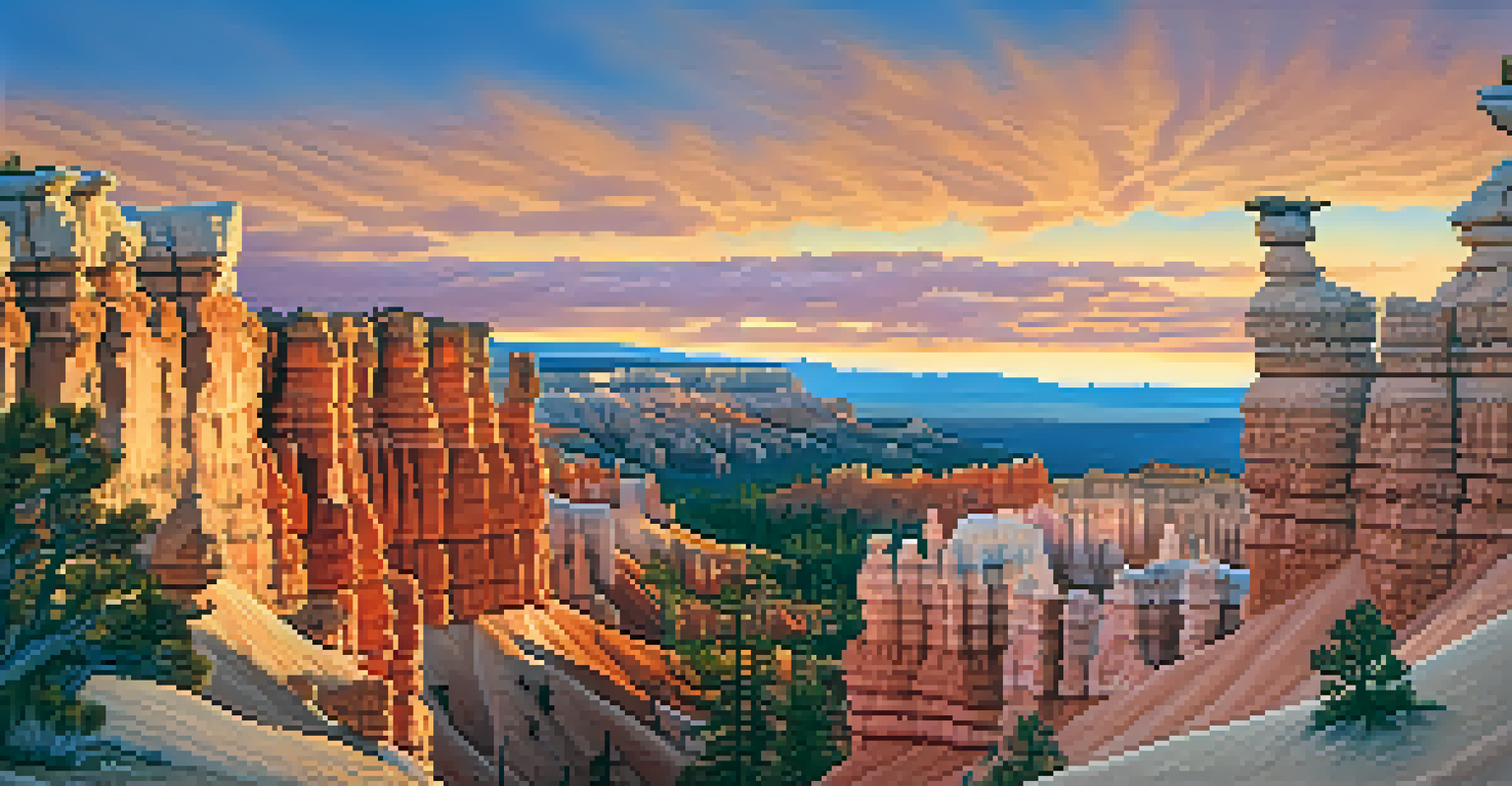Utah's Unique Geological Features: From Arches to Valleys

The Iconic Arches National Park: Nature’s Sculpted Wonders
Arches National Park is a treasure trove of natural beauty, boasting over 2,000 natural stone arches. Each arch, formed over millions of years through erosion and weathering, tells a unique story of geological processes. The most famous among them, Delicate Arch, has become a symbol of Utah itself, captivating visitors with its elegant silhouette against the backdrop of the La Sal Mountains.
In every walk with nature, one receives far more than he seeks.
Walking through the park feels like stepping into a gallery of nature’s art, where each arch and rock formation has its own character. From the towering Landscape Arch, known for its impressive span, to the whimsical Double Arch, the diversity of shapes and sizes offers something for every nature enthusiast. It's a reminder of the power of time and natural forces, sculpting the landscape in unexpected ways.
Visiting Arches National Park is not just about the sights; it's an immersive experience that connects you to the Earth’s history. As you hike the trails, you can almost feel the ancient winds that shaped these formations, making it a perfect destination for those who appreciate the wonders of geology.
Monument Valley: The Majestic Red Rock Formations
Monument Valley, with its iconic buttes and mesas, is a stunning representation of the American West's rugged beauty. These towering red rock formations rise dramatically from the desert floor, creating a surreal landscape that has inspired countless artists and filmmakers. The colors of the rocks shift throughout the day, offering a dynamic canvas that changes from deep reds to vibrant oranges.

As you explore the area, you may recognize scenes from classic Western films, as Monument Valley has served as a backdrop for many iconic movies. The landscape is rich with Navajo culture, making it a significant site not just for its geological features but also for its historical context. Guided tours led by Navajo guides provide insight into the cultural significance of the land, intertwining geology with personal stories.
Natural Wonders of Utah's Parks
Utah's national parks, including Arches and Zion, showcase breathtaking geological formations that tell stories of Earth's history.
Whether you opt for a scenic drive or a guided tour, Monument Valley invites you to experience the vastness of the desert. The immense scale of the formations can be both humbling and inspiring, reminding us of nature’s ability to create breathtaking vistas that endure through time.
Zion National Park: A Blend of Canyons and Cliffs
Zion National Park is renowned for its dramatic canyons, towering cliffs, and stunning rock formations that showcase the beauty of erosion. The park’s signature feature, Zion Canyon, has been carved by the Virgin River, creating a breathtaking landscape that attracts adventurers from all over. The vibrant colors of the sandstone cliffs, especially during sunrise and sunset, create a painterly effect that is simply mesmerizing.
The earth has music for those who listen.
Hiking in Zion offers a variety of trails, from easy walks to challenging climbs. Angels Landing, one of the park’s most famous hikes, provides panoramic views that make the effort worthwhile. As you navigate the trails, you can observe the diverse ecosystems that thrive within the park, from lush riparian zones to arid desert landscapes.
Zion’s unique geology is not just a feast for the eyes; it also serves as a living laboratory for understanding Earth’s history. The layers of rock reveal ancient environments, making it a popular spot for geologists and nature lovers alike. Each visit to Zion is a reminder of the power of nature and the beauty that comes from its slow, deliberate work.
The Great Salt Lake: Nature’s Salty Wonder
The Great Salt Lake, the largest saltwater lake in the Western Hemisphere, presents a unique geological feature that intrigues many. Its high salinity creates an environment unlike any other, allowing for the growth of specialized microorganisms and unique wildlife. The lake’s shimmering surface and surrounding wetlands offer stunning vistas, especially at sunset when the colors dance across the horizon.
As you explore the area, you’ll find that the lake's salinity fluctuates with the seasons and rainfall, affecting the ecology of the region. The nearby Antelope Island State Park provides opportunities to observe bison, birds, and other wildlife that thrive in this unusual habitat. It's a perfect example of how geology and ecology intertwine to create a dynamic environment.
Cultural Significance of Landscapes
Sites like Monument Valley and the Wasatch Range not only feature stunning vistas but also hold deep cultural importance for indigenous peoples.
The Great Salt Lake serves as a reminder of the power of geological forces at work. Its formation is linked to the ancient Lake Bonneville, a massive prehistoric lake that once covered much of Utah. Visiting this natural wonder is not only a visual treat but also an educational experience that highlights the ever-changing nature of our planet.
Capitol Reef National Park: A Hidden Gem of Geology
Capitol Reef National Park is often overshadowed by its more famous neighbors, but its geological features are equally awe-inspiring. The park is characterized by its unique Waterpocket Fold, a nearly 100-mile-long warp in the Earth's crust that showcases colorful cliffs, canyons, and rock formations. This dramatic geological structure tells a story of tectonic shifts and erosion that spans millions of years.
Visitors to Capitol Reef can explore the park’s diverse landscapes through various hiking trails and scenic drives. The Fruita historic district, with its lush orchards, offers a delightful contrast to the rugged terrain. Here, you can pick fresh fruit in season, connecting with the land in a hands-on way that enriches the overall experience.
The park’s lesser-known features, such as the petroglyphs left by ancient Native American cultures, add depth to its geological wonders. Capitol Reef is not just a feast for the eyes; it’s a place where history and geology come together, inviting exploration and appreciation of the natural world.
Bryce Canyon: The Intriguing Hoodoos
Bryce Canyon National Park is famous for its distinctive rock formations known as hoodoos, which are spire-shaped towers formed through erosion. The vibrant colors of the rocks, ranging from deep red to bright orange, create a stunning contrast against the blue sky, making it a photographer's paradise. Walking among the hoodoos feels like wandering through a fantasy landscape, where nature's artistry is on full display.
The park offers a network of trails that allow visitors to experience the hoodoos up close. The Queen’s Garden Trail is a popular choice, leading you down into the canyon where you can marvel at these unique formations from different angles. The interplay of light and shadow throughout the day enhances the beauty of the landscape, reminding us of nature's ever-changing palette.
Diverse Ecosystems and Experiences
From the unique wildlife around the Great Salt Lake to the diverse ecosystems in Capitol Reef, Utah's landscapes offer rich experiences for nature lovers.
Bryce Canyon's high elevation adds another layer of intrigue, as the cooler temperatures and diverse ecosystems support a variety of plant and animal life. The park's unique geology, combined with its vibrant wildlife, creates a rich tapestry of experiences for nature lovers. Bryce Canyon is a testament to the beauty of erosion and the wonders of geological processes.
The Wasatch Range: A Geological Backbone of Utah
The Wasatch Range is a prominent mountain range that runs along the eastern edge of Utah, providing a stunning contrast to the state's arid landscapes. Formed by tectonic forces, the range is a haven for outdoor enthusiasts, offering everything from skiing in winter to hiking in summer. The rugged peaks and deep canyons create a dramatic backdrop, showcasing the geological history of the area.
As you explore the Wasatch, you'll encounter diverse ecosystems, from alpine forests to sagebrush deserts. The range is home to numerous trails that reveal breathtaking vistas and unique geological features, such as granite cliffs and glacial valleys. Each step into the mountains is an invitation to connect with nature and witness the Earth’s grandeur up close.

The Wasatch Range also holds cultural significance, as it has been a gathering place for various indigenous tribes for centuries. Today, it continues to provide recreational opportunities and a sense of belonging for locals and visitors alike. The mountains stand as a reminder of the natural beauty that defines Utah, making it an integral part of the state's identity.